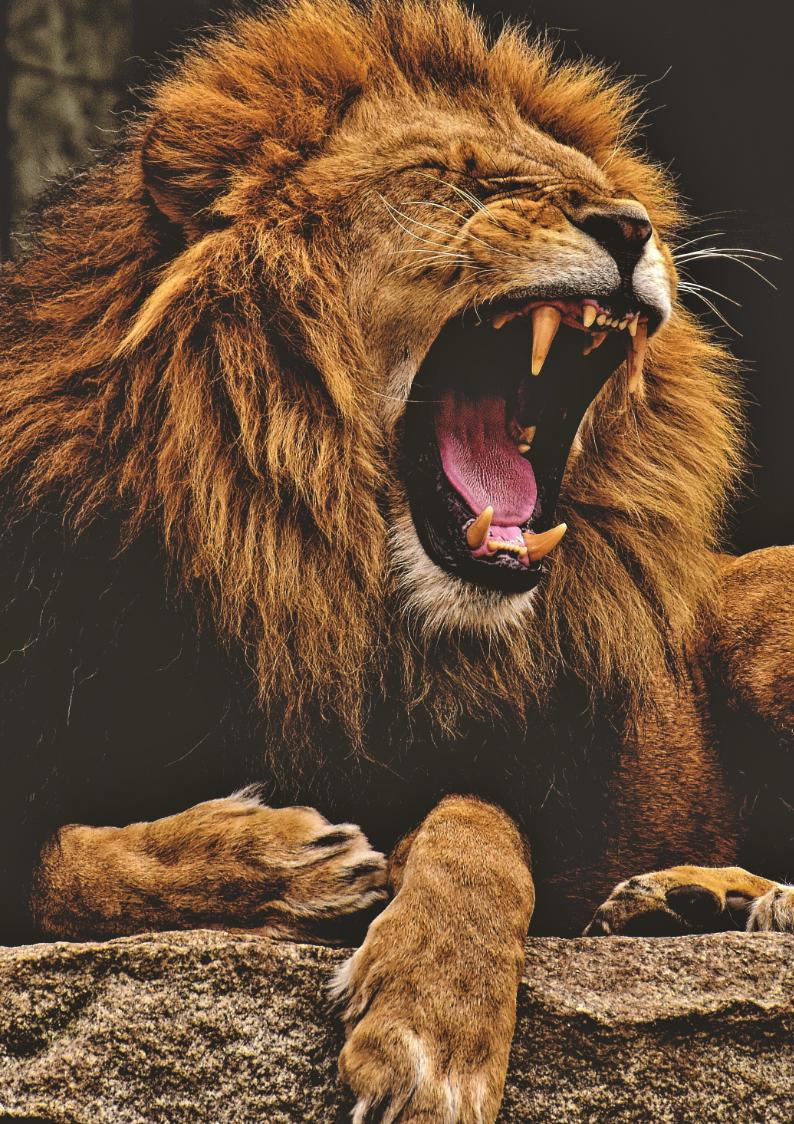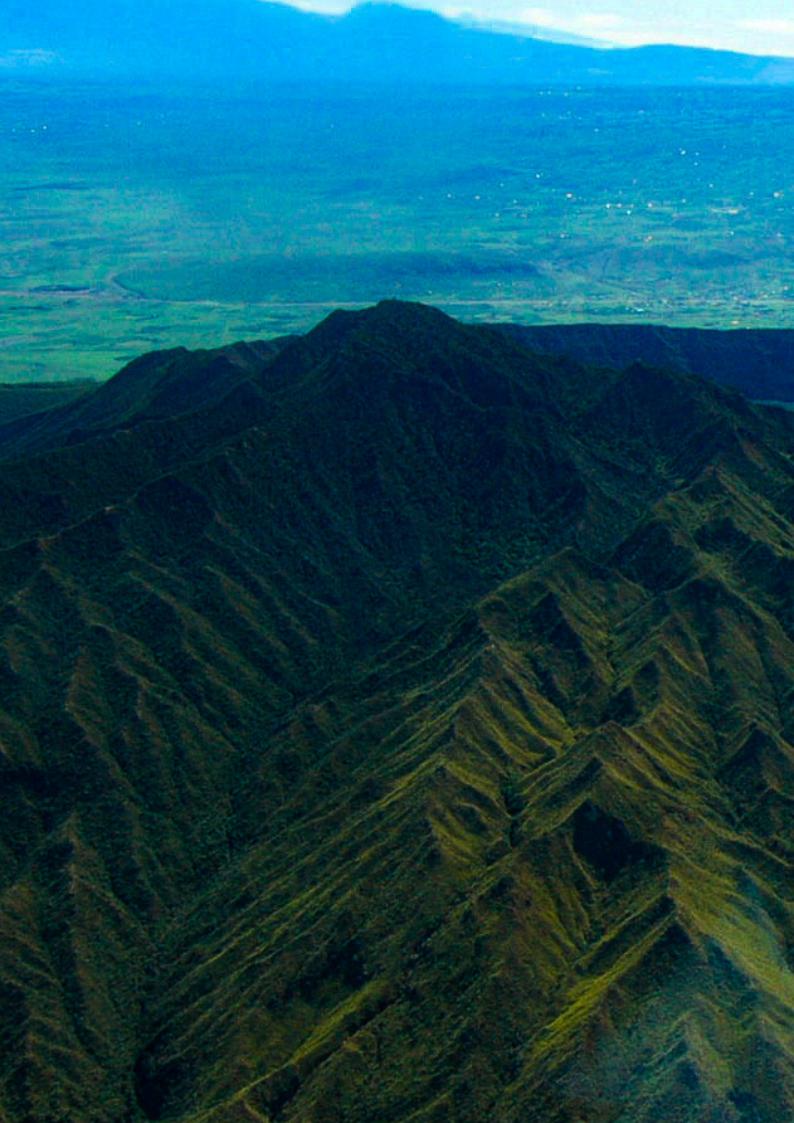
5 minute read
Our Pride
from Wild Safari
by Alex Ngaira
While we all try to find our space on this planet, some species get squeezed out of their natural habitats and the aftermath is almost always tragic. Either animals end up up venturing into areas newly occupied by humans, or they cower and retreat into an already scarce space. The result of this has been reduction in species numbers due to lessthan-ideal breeding grounds, increase in human-wildlife interaction that has proven dangerous, or both. In Kenya, and Africa as a whole, we have seen both of these situations play out. We have seen economic, diplomatic, criminal and infrastructural issues all play a varying role in how well we are able to preserve our ecology.
The Problem
Advertisement
Man and beast have been at conflict over territory for millennia. But man has advanced, in terms of tactical and cognitive ability. Animals for the most part, quite simply have not. This means that in a direct contest with the human race, animals will lose. That might sound simple until you consider what that means to the interdependent nature of the wild and how tampering with that structure might deal long-term harm to the ecosystem.
Some incidents of predators fleeing containment areas like parks and reserves, especially near highly populated areas have been reported. Of note, is predators as high in the chain as lions have been seen in cities as populous as Nairobi. This points to an extreme case of conflict. The main culprit in this particular case is suspected to be large scale human movement into and around restricted ares on the count of infrastructural development. This is an issue whose details have been kept largely under wraps and we wait to see how permanent solutions can be put in place to seal this problem.
Perspective
While issues of human animal interaction may be rare in the city, the rural farming communities as well as those who live in small nomadic villages have had lots of conflict with animals. The result of which has severally been loss of animal life and retaliatory attacks on nearby wildlife; most of which are indiscriminate.
From hippos and buffalo being slain for invading farms and destroying crops to predators such as leopards and
hyenas also losing their lives for preying on flock. This trend has brought to the surface a previously unattended recurrence of a level of human-animal conflict that needs to be nipped in the bud.
Internationally, several species have not been spared by these issue either. From the seas to the skies and thick forest habitats, none have been spared by invasion of man and the subsequent hostile interactions with animals.
Reality
In some parts of Africa, lions are vulnerable. In others they are critically endangered which is tragic because Africa and India remain the only parts of the world that still have lions, those in India only existing within Gir National Park. The tragedy of the species and its status is especially apparent in West Africa. Lions in the countries on this side of the continent have reduced by over 60% in just the last 20 years. The whole region boasts mere 400 or so individuals.
One of the problems with land animals such as lions is that their natural adaptability to their environment is fairly localized. Lions in East Africa’s Savannah for example will not so easily thrive in Northern Africa, the increasingly arid West or the Middle East. This particular evolutionary trait has obviously prevented the reintroduction of lions to these regions by conservationist bodies. Another issue is what people view as large scale neglect of conservation efforts by these governments as well as foreign based conservation bodies. Drastic and widespread increases in human populations also have an adverse effect on lions. Direct habitat encroachment causing reduction in water, shade and hiding spots; direct consumption of animal prey leading to starvation; reduction of breeding opportunities and killing of the lions themselves are all results of uncontrolled human population growth. At this rate, we will see the extinction of this species within a few decades.
East Africa tells a slightly different story with governments and conservationists teaming up to watch over lions in protected areas. This has led to a fairly stable maintenance of lion populations in and around these areas. Not so much in the wild though as lion-human conflicts are reported from time to time. Human encroachment, again, is the culprit here. Lions look for prey, which is scarce, and as a result, they attack livestock owned by nearby nomadic communities. The result of this is the predictable retaliation which sometimes means the lions being killed. Thankfully, East Africa’s aforementioned protected areas have fairly held fort. Tsavo, Serengeti and such areas are the most popular of such zones.
It is not all gloom however as South Africa and India has recorded positive movement in terms of lion population growth. With South Africa recording a median increase as high as 12%. Furthermore, South Africa’s data provides valuable perspective in terms of the human interaction factor previously mentioned. In areas where fencing has been implemented, they registered an impressive 30% increase while in open areas, there was a 10% reduction in animal populations. This reveals the extent to which control of human interaction with lions is vital.
India, in spite of being in a very dangerous spot has actually likewise seen a growth in its lion population, albeit very slow. The Asiatic lion, is a tragic tale of human consumption. Previously roaming from the middle east, to India, there now exist no lions in the wild in any Asian country besides India, in Gir Forest. This area has seen lions grow from 284 in the 90s, to 650 in the late 2010s. This after the restricted zone was commissioned in 1965. The promise that India shows in preservation of a species is however brittle. If a contagion, or a forest fire were to break out, these lions would be extremely vulnerable. We suggest that a duplicate zone be developed as a safe method of preservation. Human interaction still remains the biggest threat to lions. From poaching to encroachment and prey conflict.
The tight rope
On paper, simply telling people not to go where lions are, seems logical. In reality, not so much. In the past, some East African governments have attempted to compensate herdsmen for animals lost. This method is hardly sustainable as is harsh penalties on those who often find themselves in conflict with lions. A middle ground, with more comprehensive, sustainable reach must be sought. Careful elimination of poverty as well as cultural inclusion, participation and considerations must all be explored.
Stiff rules without socio-economic and even political considerations may seem necessary but have in the past proven to be temporary or even counterproductive.
Long live or people; Log live our lions.






